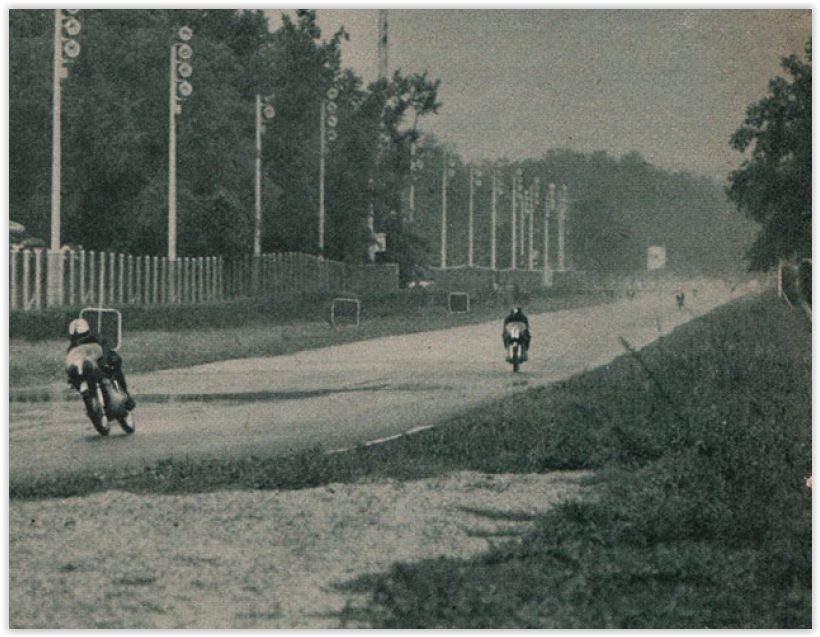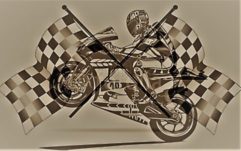
With 4 world championship titles in the 1960s and later honors
As was officially announced by Dorna some time ago, Jorge Lorenzo and Max Biaggi were inducted into the “MotoGP Hall of Fame”. New Zealander Hugh Anderson, who had his 85th birthday on January 18, 2021, was same time also declared an official MotoGP legend. According to his own statement, the top pilots in the smaller classes were very proud that their achievements at that time are still being recognized today. Here our excerpt from the history of the 25-time GP winner in the 1960s.

First in the Rugby League, then motorsport
Born on January 18, 1936 in Auckland, Hugh Anderson grew up in Huntly, north of the small town of Hamilton. There he played rugby league for Huntly United, along with future motorcycle champion Ginger Molloy. Anderson began his career in the New Zealand championship. For years he dominated the categories 350 cm³ and 500 cm³, in which Hugh won the national championship title 19 times. The New Zealander drove his first World Championship race in 1960, in which he rode A.J.S. Seventh place in the World Cup.

His first adventure at the tourist trophy
In the following year he drove the TT on the Isle of Man and took 10 to 250 cm³, 7th to 350 cm³, while he did not reach the goal on his 500 cm³ Norton. From 1962 he competed for the Suzuki works racing team in the smallest classes up to 50 cm³ and 125 cm³ and also drove some races in the 350 and 500 class. With a podium in the 50-er class on the Sachsenring (at that time still on the dangerous street circuit) and two victories in the Argentina GP (50 cm³ and 125 cm³) Anderson secured 7th place in the World Cup final classification of the 50 cm³ and 125 cm³ class.

1963 – the breakthrough
This was followed by the most successful World Championship season for Hugh Anderson, in which he achieved two wins in the GP classes up to 50 cm³ and even 6 wins up to 125 cm³ and secured the World Championship title in both classes. With 4 victories in the 50 cm³ class he was able to defend his world title in the following year. After all, he was at the top of the podium 3 times in the 1964 season up to 125 cm³ and was third in the World Cup. Anderson also competed on a 250-series Suzuki that year, but was only able to record 2 World Championship points, which meant World Championship rank 20.

1965 – the next World Championship title
In the 1965 season he was again World Championship third (up to 50 cm³) and world champion. This time he won the title in the 125 cm³ class again, ahead of Frank Perris from England, it was his fourth overall for Suzuki. With the 3rd place in the category up to 50 cm³ he was equal on points with the Swiss Luigi Taveri at the end of the season, but had only one GP victory against two of the Swiss, who became vice world champion. Incidentally, an embarrassing mistake crept into the official MotoGP website from 1964. In the 125 cm³ World Cup, New Zealander Hugh Anderson suddenly became an Englishman named Bob Anderson in the statistics. Of course, we have already written to Dorna about this and expect a correction soon.


Last Grand Prix season in 1966
In his senior year in the World Championship, Hugh was on the podium 4 times in the smallest class and was fourth in the World Championship. In the 125 cc class it was enough to get a podium on the Isle of Man and finish 5th. Anderson’s last race for Suzuki took place in 1966 at the Japanese Grand Prix in Fisco in October 1966. At the Queen’s birthday in 1994, Hugh Anderson was named a member of the Order of the British Empire for services to motorsport. A year later he was inducted into the New Zealand Sports Hall of Fame and 2020 he has been inducted into the “MotoGP Hall of Fame”.

GP successes and World Championship results from Hugh Anderson

Embarrassing mistake – who was the most successful Suzuki driver
Not (as by example falsely claimed by Motorsportmagazin.com on March 6, 2015) Kevin Schwantz is the most successful Suzuki driver of all time, but it was undoubtedly Hugh Anderson. With 4 world championship titles in the 50 cm³ and 125 cm³ classes and a total of 25 GP victories, he was the most successful driver in Suzuki’s world championship history. The popular American Schwantz had a world title and 25 GP victories in 105 starts in the 500 class.

The never forgotten british Suzuki Champion
English idol Barry Sheene even won 2 world titles in the same category in 1976 and 1977 and achieved a total of 23 world championship victories from 102 starts. There were also two vice world championship titles (125 cm³ 1971 and 500 cm³ 1978) and a Formula 750 title in 1973, a category that was very popular at the time, but which was not held as a World Cup. With 3 victories in the “Mallory Park of the Year Race”, Barry was also more successful than Kevin.

With 3 world championship titles for Suzuki – Hans Georg Anscheidt
Another look into the history books shows: In the “Schnappsglas-Klasse” (German for spirit glass class) up to 50cc, the German Hans Georg Anscheidt won three world championship titles in a row for Suzuki, which also surpassed the two sunny boys Sheene and Schwantz. After a few successes on Kreidler, he took off from 1966 to 1968 and, in terms of the number of his world championship titles, drew level with his compatriot and NSU works driver Werner Haas, also with 3 titles. From Germany only the Bavarian Toni Mang was more successful with his five world championship titles in the 80s (three to 250 cm³ and 2 to 350 cm³).

Modern times for motorsports
Thanks to live TV, the motorcycle world championship increased enormously in popularity Ultimately, this shouldn’t bother the US boy, in terms of popularity with the fans and popularity, he was able to compete with the Englishman a decade and a half later. Together with Barry Sheene, Kevin Schwantz was undisputedly one of the most popular motorcycle racers of all time. Both of them have already benefited from live TV broadcasts and the increasing awareness of the motorcycle world championship.

Let’s take our hat off
That is precisely why we should still take our hat off to the outstanding achievements of Hugh Anderson in his active time. After all, the man won the Tourist Trophy twice in his career and only very few two-wheeler artists won 4 world championship titles during their playing days. Therefore his inclusion in the “Moto GP Hall of Fame” is more than deserved.


No Comments Yet